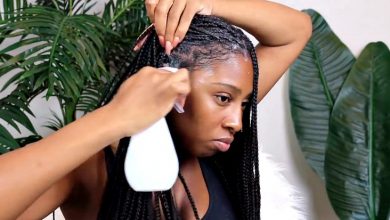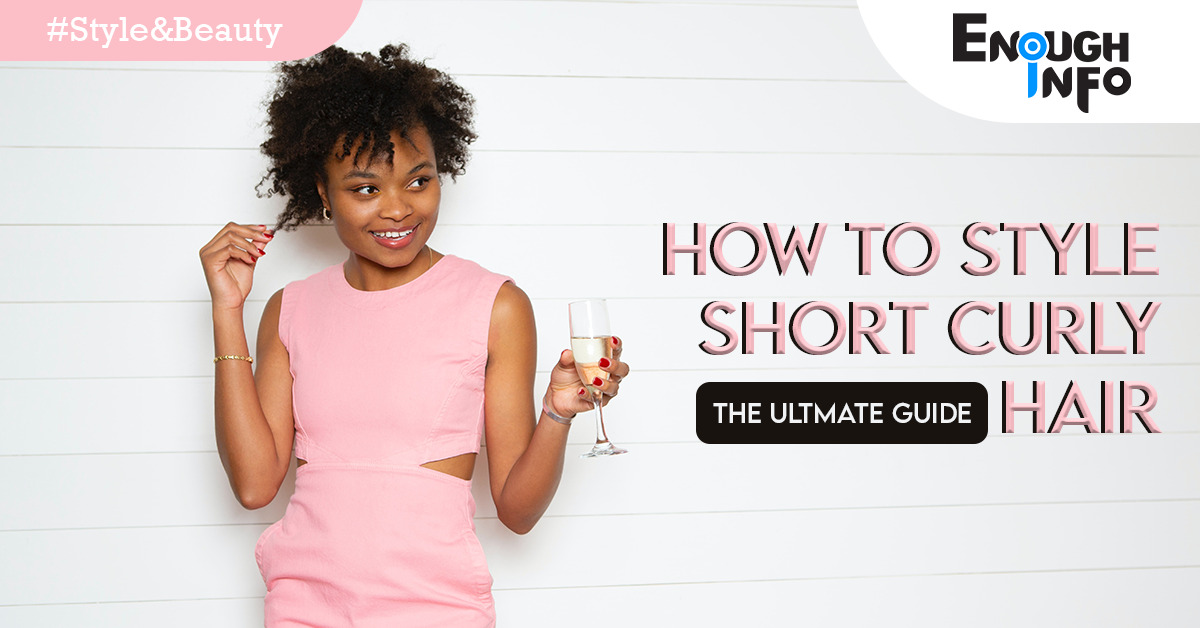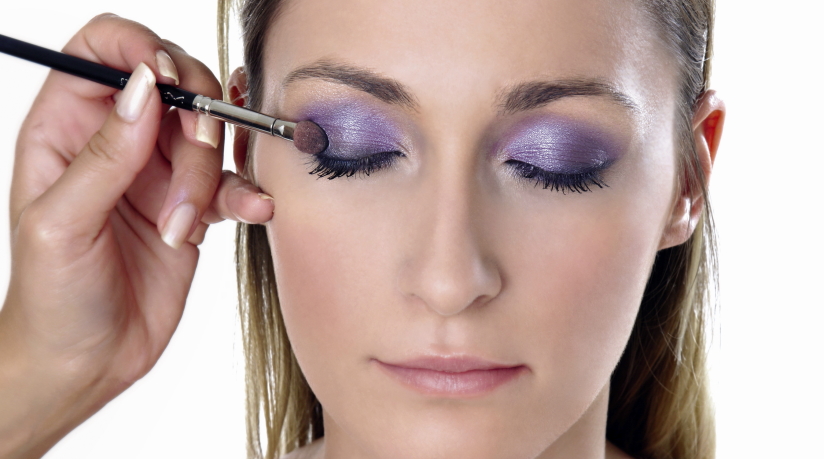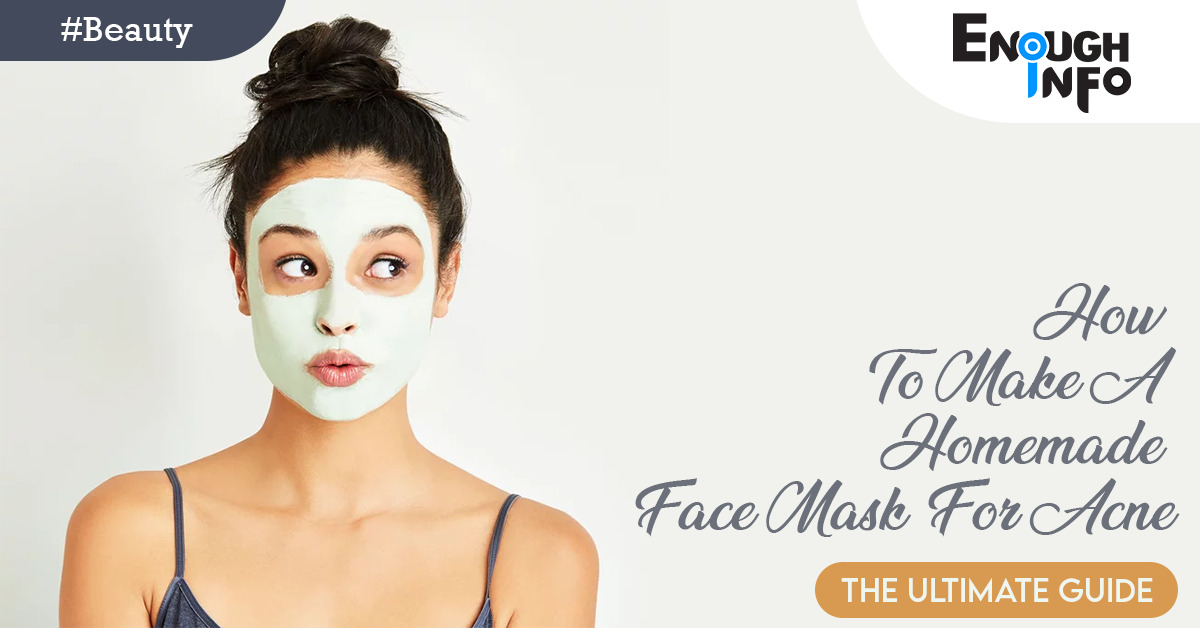How To Make Homemade Natural Beauty Products
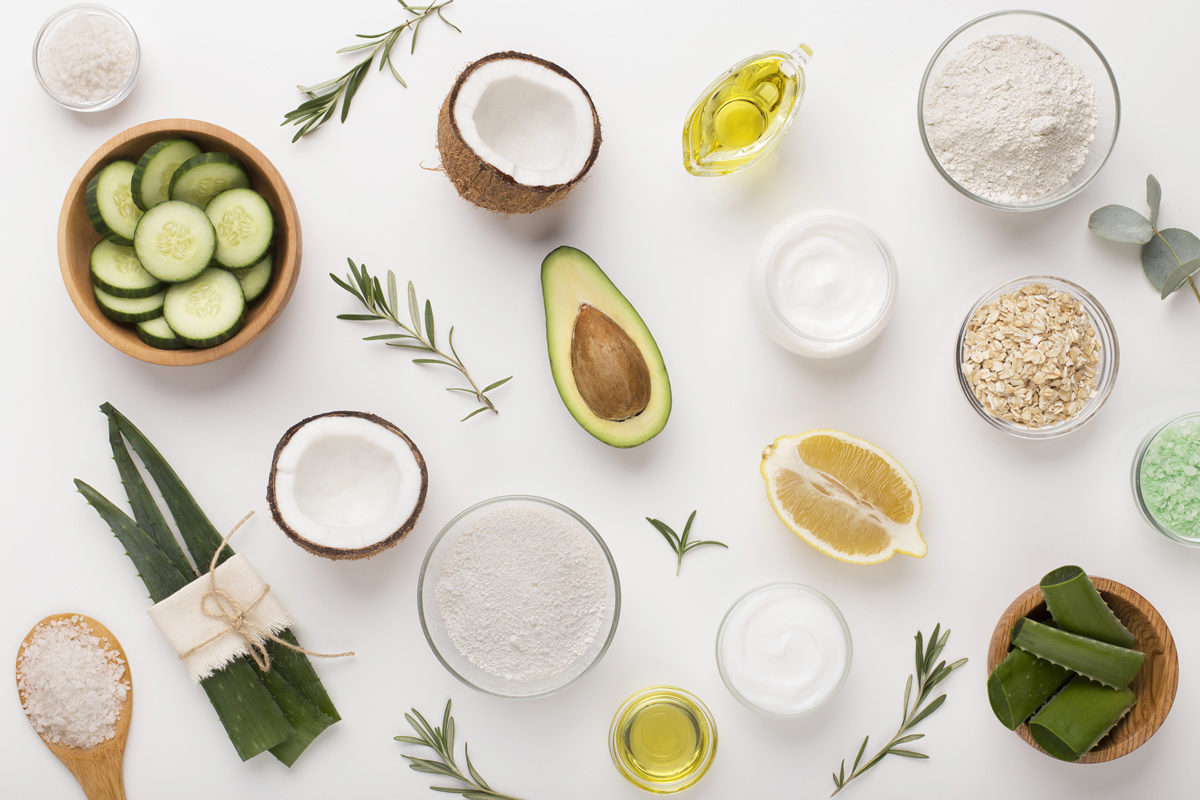
How to make homemade natural beauty products – In today’s beauty industry, more and more people are seeking natural alternatives to traditional beauty products. Making your own homemade natural beauty products allows you to have complete control over the ingredients you use and avoid potentially harmful chemicals. By harnessing the power of natural ingredients, you can create effective, eco-friendly, and budget-friendly beauty products right in your own kitchen. Natural beauty products harness the power of plant-based ingredients, which are often rich in vitamins, minerals, antioxidants, and other beneficial compounds. These ingredients can nourish, protect, and rejuvenate the skin and hair without the potential side effects associated with synthetic chemicals. Homemade natural beauty products promote a holistic approach to self-care that prioritizes overall well-being.enoughinfo
Learning how to make homemade natural beauty products is important for promoting personal well-being, environmental consciousness, and informed consumer choices. It allows individuals to take control of their beauty routines, prioritize their health, and reduce their impact on the environment. By embracing homemade natural beauty products, you can create a more sustainable, personalized, and enjoyable beauty experience.
Read Also: How To Make Homemade Face Moisturizer
Embrace Nature’s Beauty: A Guide to Homemade Natural Beauty Products
In this comprehensive guide, we will take you through the steps of making homemade natural beauty products, from skincare essentials to luxurious treatments. Whether you’re a skincare enthusiast or simply want to explore a more natural approach to beauty, this guide will empower you to create personalized products that enhance your natural beauty.
Understanding Natural Beauty Ingredients
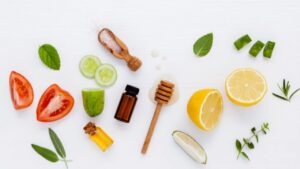
Before delving into homemade beauty product recipes, it’s important to familiarize yourself with the key natural ingredients used in these formulations. Here are some commonly used natural ingredients and their benefits:
- Carrier Oils: Explore the properties and benefits of carrier oils such as jojoba oil, coconut oil, and argan oil. These oils serve as the base for many beauty products and provide nourishment, hydration, and protection for the skin and hair.
- Essential Oils: Discover the aromatic and therapeutic qualities of essential oils like lavender, tea tree, and rosemary. Essential oils not only add a pleasant scent but also offer various skincare benefits, including calming irritated skin, balancing oil production, and promoting relaxation.
- Herbs and Botanicals: Learn about the healing properties of herbs and botanicals, such as chamomile, rose petals, and calendula. These natural ingredients can be infused into oils, water-based solutions, or incorporated directly into beauty products, providing soothing, anti-inflammatory, and antioxidant benefits.
- Natural Butters: Explore the richness of shea butter, cocoa butter, and mango butter. These moisturizing ingredients are often used in body butters, lip balms, and hair treatments, offering deep hydration and nourishment.
Essential Homemade Natural Beauty Products
In this section, we will explore recipes for essential homemade natural beauty products that cover a range of skincare and haircare needs. These recipes are easy to make and can be customized to suit your preferences and specific skin or hair concerns. Here are some key beauty products to make at home:
Cleansers and Toners: Create gentle and effective facial cleansers using natural ingredients like honey, oats, and floral waters. Make toners with witch hazel, aloe vera, or rose water to balance and hydrate the skin.
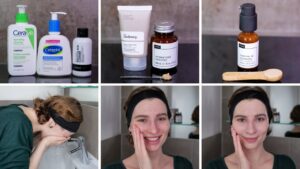
Face Masks: Pamper your skin with homemade face masks made from ingredients like clay, yogurt, honey, and fruits. These masks can address various skin concerns, including acne, dryness, and dullness.
Moisturizers: Craft nourishing facial moisturizers using combinations of carrier oils, natural butters, and essential oils. These moisturizers provide hydration, replenishment, and protection for your skin.
Lip Balms and Scrubs: Make your own lip balms and scrubs to keep your lips soft and smooth. Combine natural butters, carrier oils, and sugar or coffee grounds for gentle exfoliation and moisturization.
Body Scrubs and Lotions: Create luxurious body scrubs and lotions using ingredients like sugar, salt, carrier oils, and essential oils. These products exfoliate, moisturize, and leave your skin feeling silky and rejuvenated.
Hair Masks and Treatments: Revitalize your hair with homemade hair masks and treatments using ingredients like coconut oil, yogurt, avocado, and aloe vera. These treatments nourish the hair, promote growth, and restore shine and vitality.
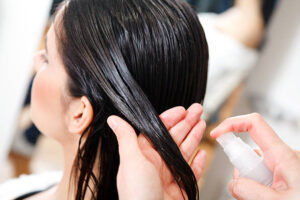
Read Also: How To Do A Basic Makeup Tutorial For Beginners
Tips For Homemade Natural Beauty Product Preparation
To ensure successful and safe preparation of homemade natural beauty products, here are some important tips to keep in mind:
- Ingredient Quality: Choose high-quality, organic, and unrefined ingredients whenever possible to maximize the benefits of your homemade products. Look for reputable suppliers or consider growing your own herbs and plants.
- Sterilization: Clean and sterilize your utensils, containers, and equipment before use to prevent contamination and extend the shelf life of your homemade products.
- Patch Testing: Before using any new beauty product, including homemade ones, conduct a patch test on a small area of your skin to check for any adverse reactions or allergies.
- Shelf Life and Storage: Homemade natural beauty products may have a shorter shelf life than commercial products due to the absence of preservatives. Label and date your products and store them in a cool, dark place to prolong their freshness.
- Experiment and Customize: Feel free to experiment with different ingredient combinations and ratios to find what works best for your skin and hair. Customize the scents and textures of your products by adjusting the amount of essential oils or using different carrier oils.
Safety Precautions And Allergies
It’s essential to exercise caution and take safety precautions when making and using homemade natural beauty products. Here are some additional safety tips:
Allergies and Sensitivities: Be aware of any known allergies or sensitivities you may have to specific ingredients. Conduct a patch test before using a new product to ensure you don’t have an adverse reaction. If you have a history of allergies or sensitive skin, consult with a dermatologist before trying new ingredients.
Hygiene: Maintain good hygiene throughout the preparation process. Wash your hands thoroughly before handling ingredients and use clean utensils and containers. Avoid introducing bacteria or contaminants into your products.
Sun Protection: Natural ingredients may not provide sufficient sun protection. If you’re using homemade products during the day or spending time outdoors, apply a separate sunscreen with appropriate SPF to protect your skin from harmful UV rays.
Consistency and Texture: Homemade products may have variations in consistency and texture compared to commercial products. Embrace the natural qualities of your creations and adjust the recipe as needed to achieve your desired results.
Discontinue Use if Irritation Occurs: If you experience any skin irritation, redness, itching, or discomfort after using a homemade product, discontinue use immediately. Consult a healthcare professional if symptoms persist or worsen.
Read Also: How To Make Homemade Body Scrub
Basic Steps:
Making homemade natural beauty products is a wonderful way to take control of your skincare and haircare routines. Here are some basic steps to get you started on creating your own homemade natural beauty products:
Step One: Educate Yourself
Familiarize yourself with different natural ingredients and their benefits for the skin and hair. Learn about carrier oils, essential oils, herbs, and other natural additives that can be used in beauty products.
Step two: Gather Ingredients and Supplies
Collect the necessary ingredients and supplies for your homemade beauty products. This may include carrier oils (such as jojoba oil or coconut oil), essential oils (like lavender or tea tree oil), herbs, natural butters (such as shea butter or cocoa butter), beeswax, glass jars or containers, mixing bowls, spoons, and labels.
Step Three: Start with Simple Recipes
Begin by experimenting with simple recipes that require only a few ingredients. For example, you can create a basic facial oil by combining a carrier oil of your choice with a few drops of essential oil. This can be used as a moisturizer or facial massage oil.
Step Four: Follow Recipes and Guidelines
As a beginner, it’s helpful to start with tried-and-tested recipes. Look for reliable sources such as reputable blogs, books, or online platforms dedicated to natural skincare and beauty. Follow the instructions and measurements provided in the recipes to ensure accurate and safe formulations.
Step Five: Customize to Suit Your Needs
Once you gain confidence, feel free to customize the recipes to suit your specific needs. You can experiment with different oils, herbs, and essential oil combinations to create products that address your unique skincare concerns or preferences.
Step Six: Practice Good Hygiene
Ensure that your utensils, containers, and work surface are clean and sanitized before starting the preparation process. This helps prevent contamination and extends the shelf life of your homemade products.
Step Seven: Store Properly
Homemade beauty products may not contain preservatives, so proper storage is crucial. Store your creations in dark glass jars or containers to protect them from light and heat. Keep them in a cool, dry place to prevent spoilage.
Step Eight: Conduct Patch Tests
Before using a new homemade product on your face or body, perform a patch test on a small area of skin. This helps ensure that you don’t have any adverse reactions or allergies to the ingredients used.
Step Nine: Learn from Experience
As you gain more experience, don’t be afraid to experiment and tweak recipes to suit your preferences. Take notes on the formulations and the effects they have on your skin and hair. This will help you refine your recipes and create products that work best for you.How to make homemade natural beauty products
Remember, making homemade natural beauty products is a journey of exploration and self-expression. Have fun, be patient, and enjoy the process of creating personalized beauty products that promote your well-being and nourish your body with nature’s goodness.
Read Also: How To Style Long Hair For A Special Occasion
FAQs & Answers
Q: Are homemade natural beauty products as effective as commercial products?
A: Homemade natural beauty products can be just as effective as commercial products, if not more. Natural ingredients often have potent properties that can benefit the skin and hair. However, the effectiveness may vary depending on the specific ingredients used and individual skin types. It’s important to customize recipes based on your skin’s needs and conduct patch tests to ensure compatibility.
Q: Can homemade natural beauty products have a longer shelf life?
A: Homemade natural beauty products typically have a shorter shelf life compared to commercial products because they lack synthetic preservatives. However, using high-quality ingredients, proper storage, and making smaller batches can help extend their shelf life. It’s advisable to label and date your products and discard them if they show any signs of spoilage or change in texture, smell, or color.
Q: Are homemade natural beauty products cost-effective?
A: Homemade natural beauty products can be cost-effective in the long run. While there may be an initial investment in purchasing ingredients and supplies, the overall cost is often lower compared to continuously purchasing commercial products. Additionally, homemade products can be customized to your needs, reducing waste and ensuring you only make what you need.
Q: Can I substitute ingredients in homemade beauty product recipes?
A: Yes, you can substitute ingredients in homemade beauty product recipes based on your preferences and availability. However, it’s important to understand the properties of the original ingredient and choose a suitable substitute with similar characteristics. Keep in mind that substitutions may alter the final texture, scent, or efficacy of the product, so it’s best to experiment in small batches and adjust accordingly.
Q: Can I use homemade natural beauty products if I have sensitive skin?
A: Homemade natural beauty products can be suitable for sensitive skin, but it’s essential to proceed with caution. Conduct patch tests on a small area of your skin before applying a new product to your face or body. Monitor the skin for any adverse reactions or irritation. If you have a history of allergies or sensitive skin, consult with a dermatologist before trying new ingredients or recipes.
Q: Are homemade natural beauty products safe for pregnant women?
A: Pregnant women should exercise caution when using homemade natural beauty products, as some essential oils and herbs may not be safe during pregnancy. It’s advisable to consult with a healthcare professional or aromatherapist to ensure the ingredients are pregnancy-friendly. Always do thorough research and consider the potential effects of each ingredient on both the mother and baby before using homemade products during pregnancy.
Q: Can I sell homemade natural beauty products?
A: Selling homemade natural beauty products may require compliance with local regulations, including product labeling, ingredient disclosure, and manufacturing practices. It’s crucial to research and adhere to applicable laws and guidelines in your region. Consulting with regulatory authorities or seeking legal advice can help ensure compliance and the safe sale of your products.
Read Also: How To Do A Basic Skincare Routine
Conclusion
Embracing homemade natural beauty products allows you to prioritize your health, the environment, and your creativity. By harnessing the power of natural ingredients, you can create personalized and effective beauty products that enhance your natural beauty. From cleansers and moisturizers to hair masks and lip balms, the recipes provided in this guide offer a starting point for your journey into homemade beauty.
Remember to always prioritize safety, conduct patch tests, and be mindful of any allergies or sensitivities. Enjoy the process of experimenting with different ingredients and discovering what works best for your skin and hair. As you embark on this natural beauty journey, you’ll not only nurture your own well-being but also contribute to a more sustainable and eco-friendly approach to personal care.
Celebrate the beauty and abundance of nature as you create homemade natural beauty products, and revel in the joy of self-care and self-expression.

